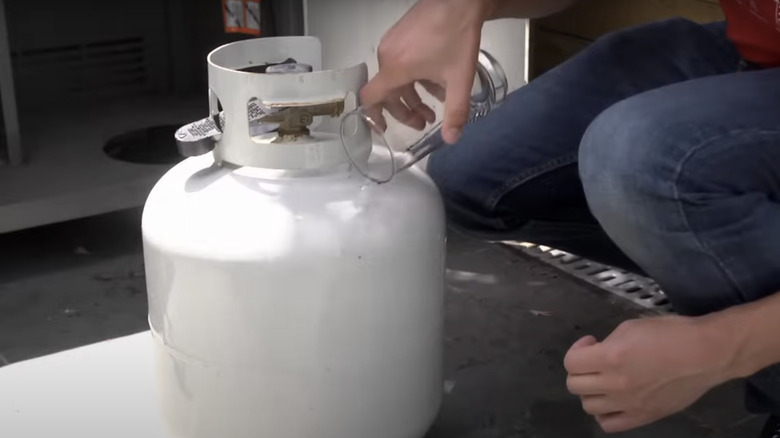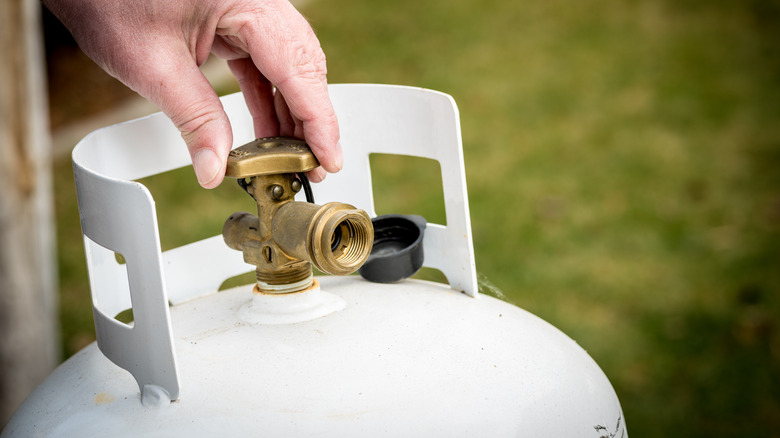The Easy Way To Tell If Your Grill Needs A Propane Refill Before The Cookout
If you're planning on showing off your grilling skills at a cookout, you'll want to make sure that your backyard set-up is in tip-top shape. While cleaning up the grates and making sure that every part of the grill is working correctly, if you have a propane grill (different from a gas grill), you'll want to take a look at the propane tank, too. If you can't remember the last time you had it refilled, a quick check can save you a lot of trouble when grill day comes around.
There are lots of ways to check how much propane is left, but the simplest requires only a glass full of hot water. Drizzle it over the tank (don't worry, it's safe), then run your hand along the metal. You'll feel a cool spot where the propane level starts. The area above it will feel warm. The line where the cool and warm areas intersect shows you exactly how full your tank is. If this line tells you that the tank only has about 20% left, then it's high time for a refill.
This trick works because propane can absorb heat really well. As the heat from the water is gobbled up by the propane, the surface of the tank cools down. Parts of the tank where there's no gas and only air and vapor will stay warm. Admittedly, while this trick isn't as precise as a pressure gauge, it's perfect for a quick check before your next planned barbecue.
Why's my recently refilled propane tank slightly empty?
If you've had your propane tank refilled recently and used this trick on it, you're guaranteed to find a big "hot" zone at the top that corresponds to about a quarter of the tank's capacity. Which ... should mean that your new tank is a bit empty at the top. Don't freak out, but it's true: your brand-new propane tank is intentionally underfilled.
No, the tank didn't leak, nor did the dealer rip you off. It's filled this way for your safety. (In fact, it'd be dangerous if it wasn't a quarter empty.) This is known as the 80/20 rule — propane tanks are only filled 80% by volume, with the other 20% being empty "vapor space."
This is because propane, like any gas, expands when subjected to high temperatures. If you fill the tank all the way, there will be no space for it to expand when it's heated up and the tank could catastrophically burst open when the metal vessel is stressed beyond its breaking point. The tanks are built to accommodate this expansion, meaning it's possible to get close to a full 20 pounds of fuel. However, places that exchange empty tanks for new ones may only be required to fill them with 15 pounds of gas. So, you're best off going to a location where you can pay for the exact amount of propane you need. Sure, you'll be trading a few batches of grilled chicken wings for that little buffer, but since it keeps your propane tank from turning into a rocket when you hook it up to the grill, it's definitely worth it.

